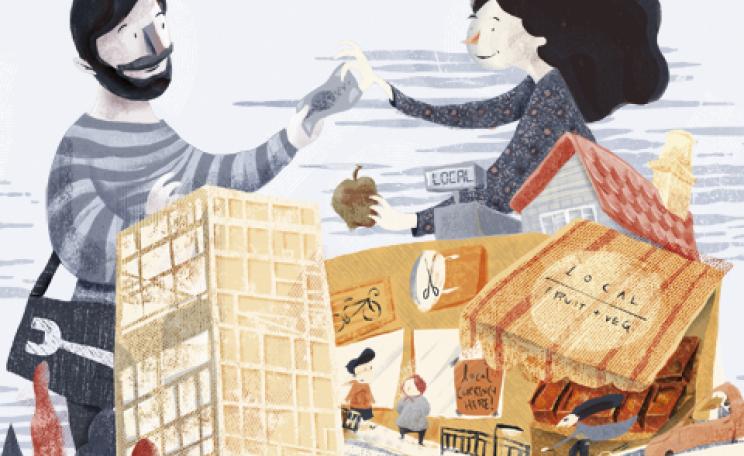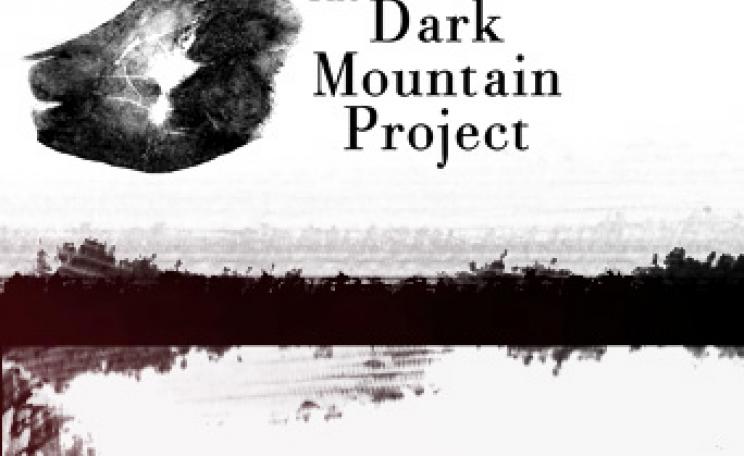There's no longer any point in denying it: it’s been a terrible year. Down on the allotment, everyone’s grumbling about it. Constant rain and virtually no sun have been a bad combination. According to the old men, who know these things, it’s been ‘the worst growing season for 30 years’. I’m not about to argue.
My onions got white rot – a hideous fungal disease that means I can’t grow onions in the same soil again for 20 years. My potatoes got blight. Half the things I planted didn’t even germinate. And I was one of the lucky ones. Other people gave up altogether. A friend of mine went down to his allotment in July to find it under five feet of floodwater, with the planks from his lovingly-constructed system of raised beds floating away on the current.
What worries me about all this is that I’ve spent the past year writing columns about the wonders there of growing your own food. I'm concerned that some of you may even have listened to me and gone out there with your seeds and spade for the first time ever – and then been hit with the worst summer on record. I just hope it doesn't make you give up. The vagaries of mother nature are all part of the deal when you grow your own food. Hang on in there - with any luck, next year will be gorgeous, and your crop will be so abundant that you’ll never look back.
Right now, though, I think we all deserve some compensation for the terrible year. And what nature taketh away in one department, she giveth in another. While it has been a pretty terrible year for vegetables, it’s been a fantastic year for fruit, nuts and other foods of the wild. So if your vegetable patch isn’t providing, try looking further afield at what nature has to offer. One way or another, you can make sure you get your fix of freshly grown, local food, even if you don't grow it yourself.
My allotment, for example, is surrounded by nature’s edible abundance. August and September were overflowing with blackberries, bursting from the hedges on every side. Blackberry whisky and several weeks’ worth of smoothies were the result of this. Up the other end of the plots, where things get wild and scrubby, there’s a line of hazel trees whose nuts are usually nicked early by squirrels but which this year were curiously abundant. They’re a million times better fresh than they are in string bags at Christmas.
Earlier in the year, the flowers of the elder tree by my shed had made me bottles and bottles of elderflower champagne, which tastes gorgeously flowery and subtle, and fizzes just like the real thing. In September, the berries are good for wine-making; something I’ve not yet tried, though last year I did have a pop at elderberry ice cream. I don’t recommend it, frankly. Still, you never know until you try.
Half a mile up the road, meanwhile, is a little suburban park. It’s got everything: a bandstand, crazy golf, nicely tended flowerbeds, a stream, a kids’ playground. More importantly, though, it’s got mulberry trees. Most people don’t seem to know what these are, or what they’re missing: giant reddish blackberries that look like oversized loganberries and taste great. You can do plenty of things with a mulberry, apparently – make jam, wine or pies – but all I’ve ever done is sit under a tree and eat them fresh.
A mile or so from the park is a golf course, surrounded by scrubland. Here, in autumn, you can usually find mushrooms in abundance – especially in a wet year. You need to be a bit careful here. I’d never go mushroom picking on my own: you have to really know what you’re doing, or your stomach could suffer. Some of the most poisonous mushrooms in the country look like some of the most edible. Get it right though, and you’ve got a field mushroom omelette for dinner. Or maybe you could find something more unusual: some cep mushrooms, perhaps, or some morels; the kind that cost you a packet in Waitrose. Or, if you really know what you’re doing, you could find something truly exotic, like the giant, yellow tree fungus known as ‘chicken of the woods’. I’ve tried it myself, and if you cook it properly it does have something of a chicken flavour.
Some people really know what they’re doing. Eighteen months ago, I wrote in the Ecologist about a day spent out foraging in the countryside of Kent with Fergus Drennan, one of the country’s few professional foragers. Fergus knows so much about the foods that nature provides that he actually manages to make a living out of it. When you or I look for wild foods, we look for the obvious – the kind of thing I’ve talked about above. Fergus goes further. There’s not a weed he can’t eat, and not a habitat he can’t make a meal from. Since I wrote about Fergus, foraging really seems to have taken off. He’s been on the radio, made a film, written a book and seen people come running for the day-long foraging courses he runs in Kent. I found myself on Radio 4’s consumer programme You and Yours with him a few months ago, explaining the joys of wild food to the slightly bemused presenters while Fergus cooked some of it up in the corner.
Foraging, in other words, like vegetable growing before it, is taking off: another spanner in the works of the global food machine. And however hard that machine works to persuade us that nature is dirty and dangerous, and that only laboratories and superstores can provide us with our nutritional needs, some of us are still not convinced. So if your leeks failed this year, and your tomatoes were a flop, never fear: get out into the hedgerows with a basket and try it yourself. You never know what you might find.
Useful resources
• Fergus Drennan’s website is www.wildmanwildfood.com
• Wild Food by Roger Phillips (Pan) is another classic guide, full of great recipes. Take at least one of these out with you if you can
• Richard Mabey’s classic book Food for Free (Collins) is as useful as ever
• All my previous columns on allotments and food growing are collected on my website at www.paulkingsnorth.net
Contact me
With questions, comments or anything you think I should know. Email: growit@paulkingsnorth.net
This article first appeared in the Ecologist November 2007
For ethical and sustainable suppliers of Food and Drink goods and services check out the Ecologist Green Directory here







